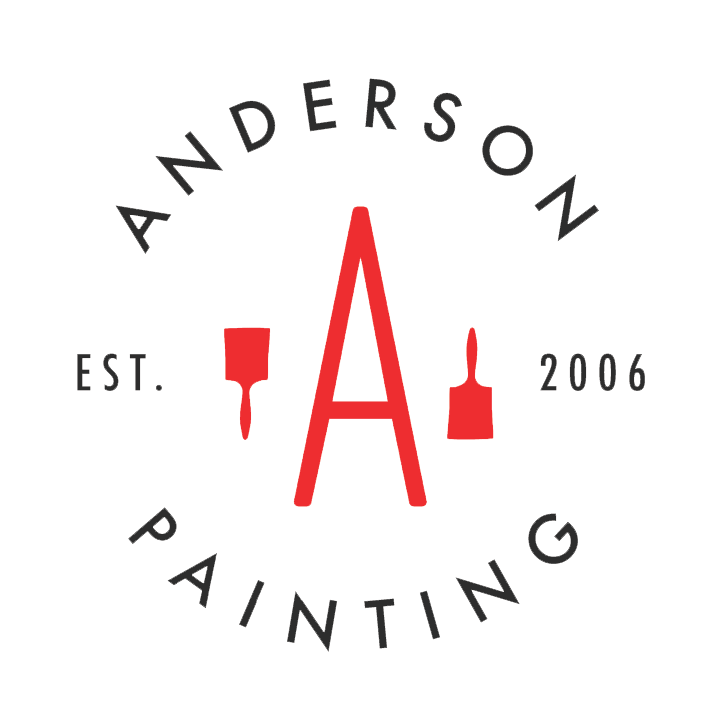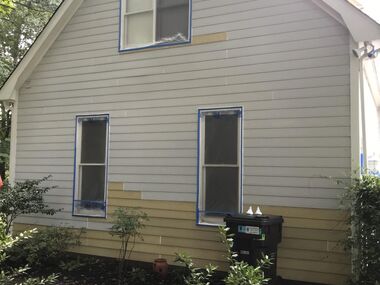Best Weather Conditions for Painting Your Home Exterior

When painting your home’s interior, you have complete control over the conditions. You can set the room’s temperature, bring in some fans to speed up the drying process, and even lower the room’s humidity. Painting the exterior, however, is another story. You can’t control the weather or the general climate of your region. Plus, some conditions are certainly better than others for Raleigh house painting.
If you want to get the job done quickly and properly, you’ll want to wait until the time is right. Let’s explore the ideal weather conditions for painting your home exterior.
Optimal Temperature for Painting
No one wants to paint when it’s freezing cold or scorching hot. It turns out that the paint itself doesn’t like these extreme temperatures either! Paint has trouble binding when it’s too cold or hot, meaning it won’t adhere to the surface as strongly as it would otherwise. If the paint isn’t sticking well, it will peel away much faster.
Because of these factors, Raleigh house painters should wait to paint outside until the temperature falls somewhere between 50 and 85 degrees Fahrenheit. There is some give and take here depending on the type and brand of paint being used, but working within this moderate 35-degree range is usually a safe bet. Keep in mind that direct sunlight can have a major impact on the temperature as well, so try to paint in the shade as much as possible to avoid major fluctuations in heat.
Wait for Low Wind Speeds
High wind speeds can interfere with an exterior painting job. At the very least, the wind is an annoyance. Drop cloths and covers may flap around or fly away completely, and using a paint sprayer might prove useless and messy. Too much wind can be dangerous, in fact, rocking ladders side to side and flinging debris around. Wind also affects the paint itself, causing it to dry more quickly than it should. Plus, dirt and debris might make their way onto the paint as it’s drying. And lastly, if nothing else, high winds usually indicate a coming storm or significant change in temperature. Either way, that’s a bad omen for exterior painting.
Relative Humidity Considerations
Sometimes, we get so wrapped up in the temperature that we ignore other climate concerns, such as humidity. Relative humidity is essentially a measurement of water vapor present in the air. When this percentage is high, it indicates a lot of moisture, which also affects how paint dries outside. It makes sense that moist air would cause paint to dry more slowly. When this happens, you might end up with drip marks or streaking. Experts recommend that exterior painting occur when the relative humidity rests between 40% and 70%.
Rain, Rain, Go Away
This goes without saying, but rain can downright ruin an exterior paint job. Whether you’re painting some siding or applying deck stain, this falling water can undo the work you’ve already put in. At the very least, even a light mist can affect the appearance and dry time of your paint. While some rain clouds might come about unexpectedly, forecasts are pretty good at predicting rain these days. If you’re preparing to paint your home’s exterior, make sure you pick a day that looks as clear as possible.
Fortunately, compared to other regions of the U.S., Raleigh, NC has pretty moderate weather conditions year-round. Still, things change on a day-to-day basis, so it’s important to look at the forecast thoroughly before deciding to paint outdoors.
How Long Does Exterior Paint Need to Dry Before Rain?
It is best to schedule your exterior painting project on days with no expected rain for at least 24 to 48 hours. That’s the standard amount of time required for most exterior paint types to dry. Other paint types, like latex acrylic paint, can be lightly rained on two hours after application without damage.
However, these drying time estimates can change depending on the number of coats, type of substrate, use of primer, and paint density and quality. You also need to factor in the wind and humidity. High wind speed may be an annoyance during exterior painting, but it helps immensely when drying the paint. Meanwhile, high humidity makes paint dry much slower.
What If the Paint Gets Rained on Before It's Dry?
Weather can be unpredictable. If it rains before your exterior paint completely dries, there will, unfortunately, be several issues you have to fix. Rainwater can weaken paint adhesion, leading to peeling and flaking once it dries. The paint may also bubble due to excess moisture. Rainwater can also create streaks and smudges.
You can smooth out those imperfections once the surface is completely dry and reapply paint once the weather is clear and conditions are optimal. However, in the case of a downpour, you will likely have to redo the paint job because the rainwater may wash away the fresh paint.
Fortunately, if you can’t find the time or don’t have the energy to do all the hard work, you can hire professionals. Wilmington painting contractors do everything they can to avoid rain damage when painting outdoors. After all, fixing rain damage on fresh paint or redoing an unsalvageable paint job can get expensive. This is why professionals carefully monitor the weather forecast. But since forecasts aren’t 100% precise, Wilmington painters can still get caught in the rain—in which case, they will stop and wait for the surface to dry before resuming work.
Reliable Wilmington painters will fix rain damage on a fresh paint job or repaint it if necessary. In the end, you’ll get a quality, lasting finish without having to worry about the paint job getting rained on before it is fully dry.
Get Your Exterior Painted the Right Way
If you want more advice on ideal painting conditions or need a reliable team to get the job done, Anderson Painting can help. To learn more about us and all our services, call Anderson Painting today at 919-610-1855 or email us at info@andersonpaintingnc.com!



